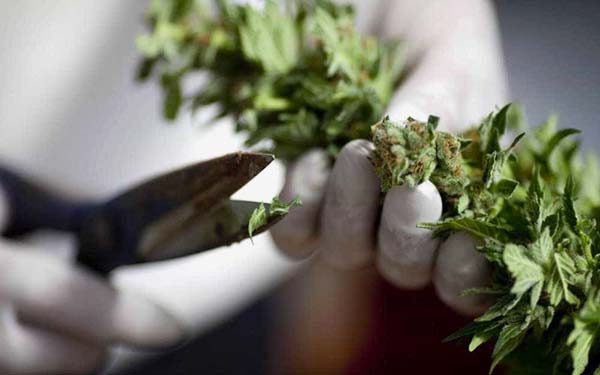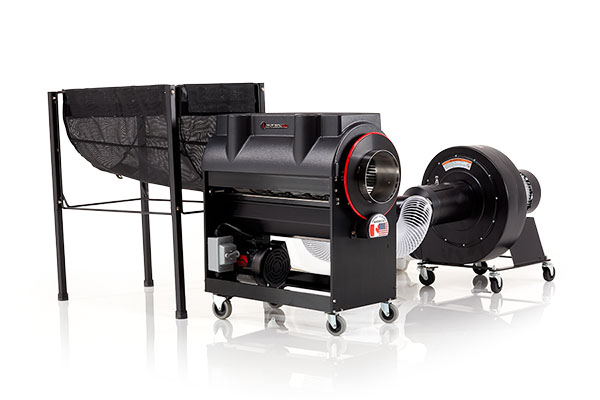Throughout his election, Joe Biden pledged to raise the hourly minimum wage to $15. Following his inauguration, this could soon become a reality with a significant impact on overheads nationwide. Many states with legal cannabis markets have indicated they will raise the minimum wage in 2021, but while bigger companies may be able to absorb the increased costs others cannot and may have to cut their workforce.
The states with progressive cannabis laws also have some of the highest minimum wages, with California and Washington top of the pile. This is good news for employees in these jurisdictions, with a minimum wage increase usually driving up rates across the pay scale, but comes at a heavy price for the region’s small growers. At $15 an hour, an employee actually costs organizations approximately $17 an hour when taxes and benefits are taken into consideration. When ancillary costs are accounted for, such as hiring, training and the price of equipment, this hourly rate rises even further.
Cost Analysis
As a result of heavy competition, both regulated and unregulated, many cannabis businesses operate on tight profit margins or struggle just to break even. The proposed wage hikes are the latest financial burden for small growers, with labour costs expected to rise further in the coming years. With wage inflation outpacing slow but steady growth in wholesale prices, which may still falter, to futureproof their operations growers must review current costs and evaluate how wage increases will impact their bottom line.
This starts with a comprehensive cost analysis, to systematically identify the overheads tied to cannabis cultivation, harvesting and processing. Once these expenses have been determined, growers can evaluate their benefits and whether they are essential to uphold quality standards. By scrutinizing their outgoings, operations will be better positioned to discover opportunities that improve profitability. Many will be linked to modernizing production processes and adopting automation, which may increase costs initially but improve efficiencies in the long term. However, while an array of specialist cannabis technologies have been developed to streamline operations, growers must calculate the return of their investment and avoid modernizing tasks for the sake of it.
Harvesting Help
The most labour-intensive task in cannabis production is typically harvesting, with high costs linked to the size of the team employed and climbing wages. To fetch the highest price point, flower needs to be trimmed and meticulously manicured to enhance flavour, smoothness and strength. Artisanal approaches were romanticized in the legacy industry, but hand trimming is extortionately expensive and rarely enhances flower enough to justify the expenditure.
A tedious and tiresome task at scale, hand trimming relies on a motivated and skilled workforce likely to command more than minimum wage. A team of outside professionals can charge as much as $200 per lb of finished flower, with each team member trimming one pound of dried cannabis a day. This means a 170 lb harvest could cost $34,000 and take 35 dedicated employees a week to complete. While unskilled labour can be utilized for markedly less, allowances would need to be made for the time taken and calibre of the cut, with a significant percentage needing to be redone.

Contrary to popular belief an exceptional trim does not need to be done by hand, which often reduces quality and results in inconsistencies across the harvest. Instead, specialist technologies can be as versatile as a hand trimmer, yet capable of infinitely greater efficiency and consistency. With the ability to process wet or dry cannabis, and adjustable for different flower densities, machines can replicate hand-finished product at a rate inconceivable to achieve manually. This empowers growers to simultaneously streamline operations, reduce costs and raise production standards.
Streamline Strategically
However, when embracing automation growers must calculate the return on their investment to ensure its a financially sound decision. This entails totalling the labour costs related to manually trimming a harvest, and then comparing this against the price of running a trimming machine.
With a hand-trimmer processing one pound of dried cannabis in an eight-hour day, at the new minimum wage that equates to $120 per pound of cannabis. In a 2,000 sq. ft. indoor facility, producing roughly 170 lb of dried flower, this totals $20,400 every single harvest. This is more than double the one-off cost of CenturionPro’s Original trimmer, which can process 175 lb in as little as 12 hours. As a result, the trimmer pays for itself in less than one harvest, with an industry leading ten-year warranty ensuring the technology’s performance for dozens of crops.

This generates substantial cost savings for growers in the long term, which empowers growers to divert sources to other areas of the operation, such as quality assurance, to elevate finished flower above the competition. It also reduces their reliance on an increasingly expensive labour force, which can leave companies vulnerable to unforeseen circumstances such as COVID-19 lockdowns. When streamlining operations growers should look for the early big wins, automating the most labour-intensive and expensive tasks first. For many this is the crucial, but tedious, harvesting process, which can make or break the value of the crop. To simplify the process of identifying the right elite harvesting solution for your grow, CenturionPro has created the Product Selector – simply input the size of your operation to get started.
As a supplier of harvesting automation solutions, CenturionPro is committed to continue servicing customers during the COVID-19 crisis. By doing so we hope to improve the automation of the world’s cannabis producers. Allowing them to meet the growing demand while still complying with government-imposed restrictions and recommendations. To speak with us about how to improve harvesting automation at your farm or facility, please contact us at info@cprosolutions.com or by phone at 1-855-535-0558 or 1.604.457.1101.
Need More Guidance?



